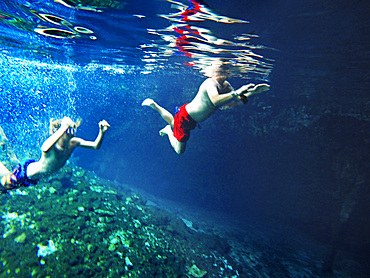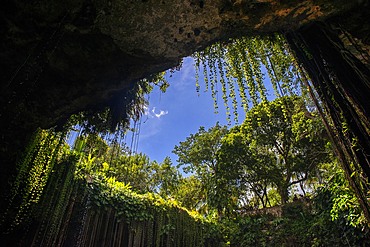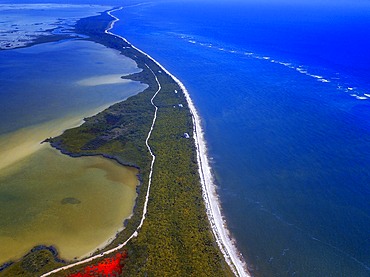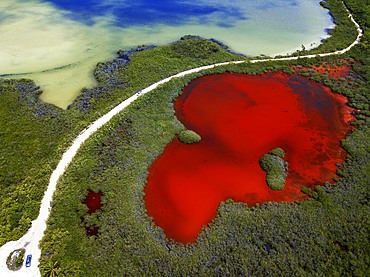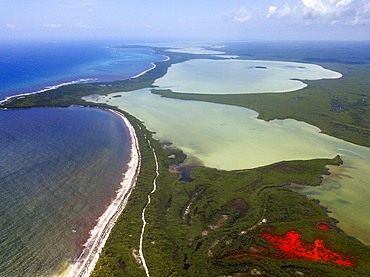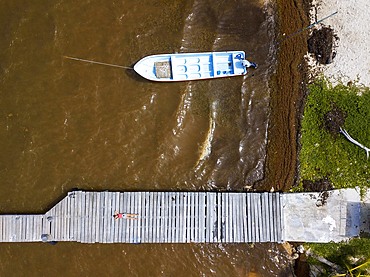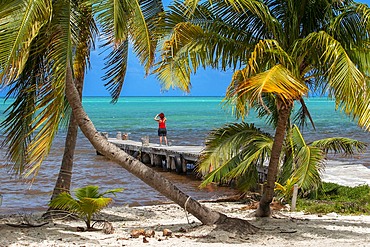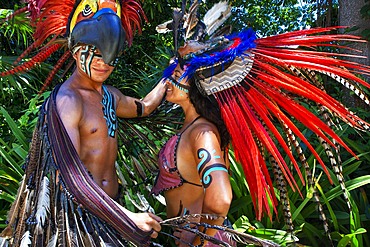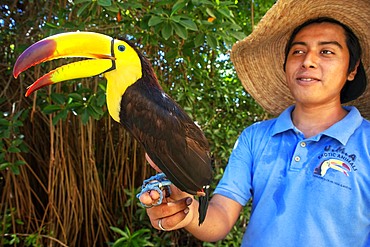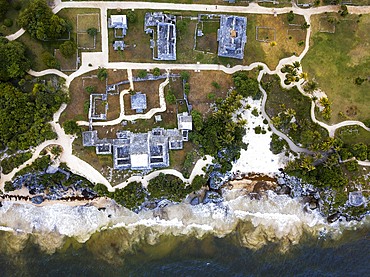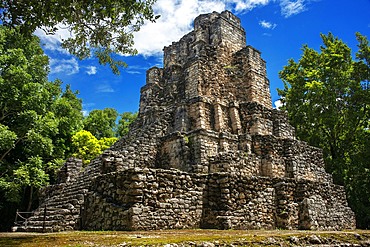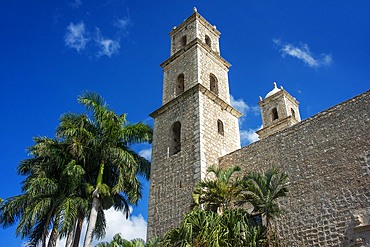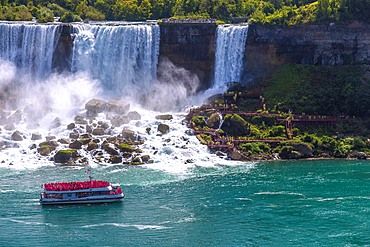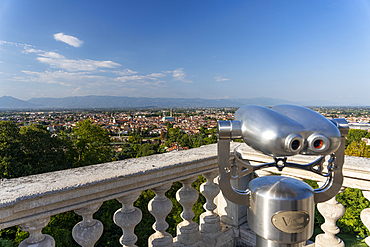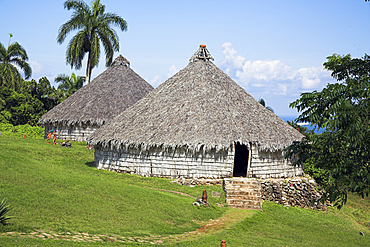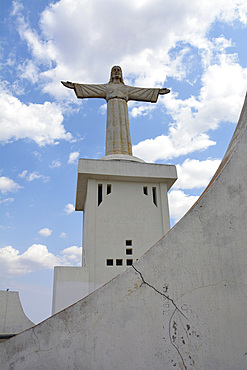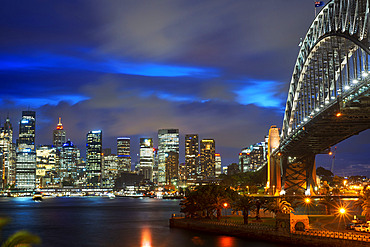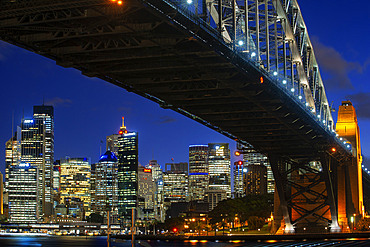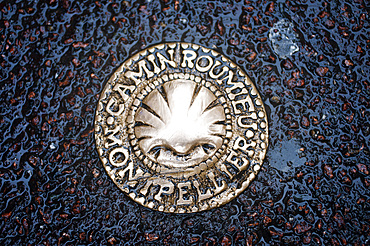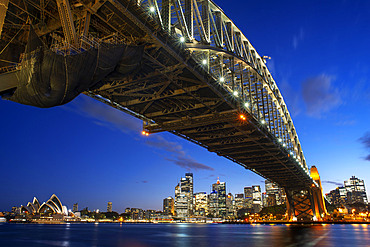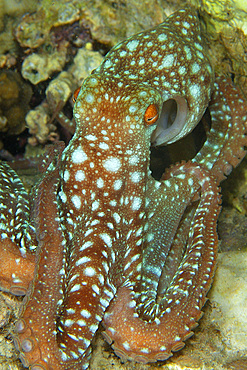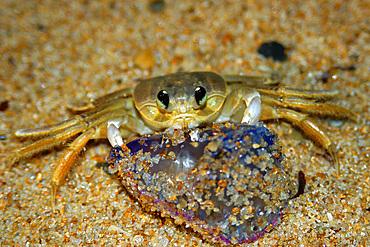Recent searches
Loading...
1350-6636 - Aerial view of Mayan Ruin of Chichen Itza Archaeological Site Yucatan Peninsula, Quintana Roo, Caribbean Coast, Mexico
1350-6635 - Aerial view of Mayan Ruin of Chichen Itza Archaeological Site Yucatan Peninsula, Quintana Roo, Caribbean Coast, Mexico
1350-6630 - Swimming at Cenote Ik Kil in Yucatan, Mexico, a natural pit, or sinkhole near Chichen Itza. Yucatan Peninsula, Quintana Roo, Mexico. Ik Kil was sacred to the Mayans who used this cenote for both relaxation and ritual services centuries ago.
1350-6633 - Gran Cenote de Tulum in Yucatan Peninsula, Quintana Roo, Mexico. There are thousands of cenotes dotted all over Mexico���s Yucatan Peninsula, and their existence is as much a defining characteristic of the region as is the distinct geological feature from which they result. Once revered by the ancient Mayans as sacred wells, they are now magnets for tourists, adventurers, and explorers alike.
1350-6628 - Cenote Ik Kil in Yucatan, Mexico, a natural pit, or sinkhole near Chichen Itza. Yucatan Peninsula, Quintana Roo, Mexico. Ik Kil was sacred to the Mayans who used this cenote for both relaxation and ritual services centuries ago.
1350-6627 - Aerial view of Punta Allen Sian Ka'an Reserve, Yucatan Peninsula, Mexico. Red lagoon near Boca Paila Bridge.
In the language of the Mayan peoples who once inhabited this region, Sian Ka'an means Origin of the Sky. Located on the east coast of the Yucatán peninsula, this biosphere reserve contains tropical forests, mangroves and marshes, as well as a large marine section intersected by a barrier reef. It provides a habitat for a remarkably rich flora and a fauna comprising more than 300 species of birds, as well as a large number of the region's characteristic terrestrial vertebrates, which cohabit in the diverse environment formed by its complex hydrological system.
Along its roughly 120 kilometres of coastline, the property covers over 400,000 hectares of land ranging from sea level to only ten m.a.s.l. The property boasts diverse tropical forests, palm savannah, one of the most pristine wetlands in the region, lagoons, extensive mangrove stands, as well as sandy beaches and dunes. The 120,000 hectares of marine area protect a valuable part of the Mesoamerican Barrier Reef and seagrass beds in the shallow bays. The lush green of the forests and the many shades of blue of the lagoons and the Caribbean Sea under a wide sky offer fascinating visual impressions.
1350-6623 - Aerial view of Punta Allen Sian Ka'an Reserve, Yucatan Peninsula, Mexico. Red lagoon near Boca Paila Bridge.
In the language of the Mayan peoples who once inhabited this region, Sian Ka'an means Origin of the Sky. Located on the east coast of the Yucatán peninsula, this biosphere reserve contains tropical forests, mangroves and marshes, as well as a large marine section intersected by a barrier reef. It provides a habitat for a remarkably rich flora and a fauna comprising more than 300 species of birds, as well as a large number of the region's characteristic terrestrial vertebrates, which cohabit in the diverse environment formed by its complex hydrological system.
Along its roughly 120 kilometres of coastline, the property covers over 400,000 hectares of land ranging from sea level to only ten m.a.s.l. The property boasts diverse tropical forests, palm savannah, one of the most pristine wetlands in the region, lagoons, extensive mangrove stands, as well as sandy beaches and dunes. The 120,000 hectares of marine area protect a valuable part of the Mesoamerican Barrier Reef and seagrass beds in the shallow bays. The lush green of the forests and the many shades of blue of the lagoons and the Caribbean Sea under a wide sky offer fascinating visual impressions.
1350-6625 - Aerial view of Punta Allen Sian Ka'an Reserve, Yucatan Peninsula, Mexico. Red lagoon near Boca Paila Bridge.
In the language of the Mayan peoples who once inhabited this region, Sian Ka'an means Origin of the Sky. Located on the east coast of the Yucatán peninsula, this biosphere reserve contains tropical forests, mangroves and marshes, as well as a large marine section intersected by a barrier reef. It provides a habitat for a remarkably rich flora and a fauna comprising more than 300 species of birds, as well as a large number of the region's characteristic terrestrial vertebrates, which cohabit in the diverse environment formed by its complex hydrological system.
Along its roughly 120 kilometres of coastline, the property covers over 400,000 hectares of land ranging from sea level to only ten m.a.s.l. The property boasts diverse tropical forests, palm savannah, one of the most pristine wetlands in the region, lagoons, extensive mangrove stands, as well as sandy beaches and dunes. The 120,000 hectares of marine area protect a valuable part of the Mesoamerican Barrier Reef and seagrass beds in the shallow bays. The lush green of the forests and the many shades of blue of the lagoons and the Caribbean Sea under a wide sky offer fascinating visual impressions.
1350-6620 - Aerial view of Punta Allen Sian Ka'an Reserve, Yucatan Peninsula, Mexico. Red lagoon near Boca Paila Bridge.
In the language of the Mayan peoples who once inhabited this region, Sian Ka'an means Origin of the Sky. Located on the east coast of the Yucatán peninsula, this biosphere reserve contains tropical forests, mangroves and marshes, as well as a large marine section intersected by a barrier reef. It provides a habitat for a remarkably rich flora and a fauna comprising more than 300 species of birds, as well as a large number of the region's characteristic terrestrial vertebrates, which cohabit in the diverse environment formed by its complex hydrological system.
Along its roughly 120 kilometres of coastline, the property covers over 400,000 hectares of land ranging from sea level to only ten m.a.s.l. The property boasts diverse tropical forests, palm savannah, one of the most pristine wetlands in the region, lagoons, extensive mangrove stands, as well as sandy beaches and dunes. The 120,000 hectares of marine area protect a valuable part of the Mesoamerican Barrier Reef and seagrass beds in the shallow bays. The lush green of the forests and the many shades of blue of the lagoons and the Caribbean Sea under a wide sky offer fascinating visual impressions.
1350-6616 - Aerial view of Punta Allen Sian Ka'an Reserve, Yucatan Peninsula, Mexico.
In the language of the Mayan peoples who once inhabited this region, Sian Ka'an means Origin of the Sky. Located on the east coast of the Yucatán peninsula, this biosphere reserve contains tropical forests, mangroves and marshes, as well as a large marine section intersected by a barrier reef. It provides a habitat for a remarkably rich flora and a fauna comprising more than 300 species of birds, as well as a large number of the region's characteristic terrestrial vertebrates, which cohabit in the diverse environment formed by its complex hydrological system.
Along its roughly 120 kilometres of coastline, the property covers over 400,000 hectares of land ranging from sea level to only ten m.a.s.l. The property boasts diverse tropical forests, palm savannah, one of the most pristine wetlands in the region, lagoons, extensive mangrove stands, as well as sandy beaches and dunes. The 120,000 hectares of marine area protect a valuable part of the Mesoamerican Barrier Reef and seagrass beds in the shallow bays. The lush green of the forests and the many shades of blue of the lagoons and the Caribbean Sea under a wide sky offer fascinating visual impressions.
1350-6615 - Palms and old pier in Punta Allen Sian Ka'an Reserve, Yucatan Peninsula, Mexico.
In the language of the Mayan peoples who once inhabited this region, Sian Ka'an means Origin of the Sky. Located on the east coast of the Yucatán peninsula, this biosphere reserve contains tropical forests, mangroves and marshes, as well as a large marine section intersected by a barrier reef. It provides a habitat for a remarkably rich flora and a fauna comprising more than 300 species of birds, as well as a large number of the region's characteristic terrestrial vertebrates, which cohabit in the diverse environment formed by its complex hydrological system.
Along its roughly 120 kilometres of coastline, the property covers over 400,000 hectares of land ranging from sea level to only ten m.a.s.l. The property boasts diverse tropical forests, palm savannah, one of the most pristine wetlands in the region, lagoons, extensive mangrove stands, as well as sandy beaches and dunes. The 120,000 hectares of marine area protect a valuable part of the Mesoamerican Barrier Reef and seagrass beds in the shallow bays. The lush green of the forests and the many shades of blue of the lagoons and the Caribbean Sea under a wide sky offer fascinating visual impressions.
1350-6611 - Underwater close up view of open coral polyp during a dive, Cancun, Quintana Roo, Mexico
1350-6608 - Mexican aztec dress gods at Grand Palladium White Sand Resort and Spa in Riviera Maya, Yucatan Peninsula, Quintana Roo, Caribbean Coast, Mexico.
Aztec clothing was generally loose fitting and did not completely cover the body. When the Spanish arrived in Mexico, the people were surprised to see them in their full armour, with only their faces exposed.
Aztec clothes were generally made of cotton (which was imported) or ayate fiber, made from the Maguey Cactus (also called the Century Plant or American Aloe). Women would weave the fibers into clothing, a task girls were taught as young teenagers. Because of their vast trading network, the Aztecs were able to make use of a beautiful array of dyes, creating the brilliant
1350-6609 - Kayakking in front of the beach of Grand Palladium White Sand Resort and Spa in Riviera Maya, Yucatan Peninsula, Quintana Roo, Caribbean Coast, Mexico
1350-6606 - A Mexican staff member holds a tucan at Grand Palladium White Sand Resort and Spa in Riviera Maya, Yucatan Peninsula, Quintana Roo, Caribbean Coast, Mexico
1350-6602 - Aerial view of Grand Palladium White Sand Resort and Spa in Riviera Maya, Yucatan Peninsula, Quintana Roo, Caribbean Coast, Mexico
1350-6597 - Aerial views of El Castillo and the Ruins of the Mayan temple grounds at Tulum, Quintana Roo, Yucatan, Mexico. Tulum is the site of a pre-Columbian Mayan walled city which served as a major port for Coba, in the Mexican state of Quintana Roo. The ruins are situated on 12 meter 39 ft tall cliffs along the east coast of the Yucatán Peninsula on the Caribbean Sea in the state of Quintana Roo, Mexico. Tulum was one of the last cities built and inhabited by the Maya; it was at its height between the 13th and 15th centuries and managed to survive about 70 years after the Spanish began occupying Mexico. Old World diseases brought by the Spanish settlers appear to have resulted in very high fatalities, disrupting the society, and eventually causing the city to be abandoned.
1350-6599 - Aerial views of El Castillo and the Ruins of the Mayan temple grounds at Tulum, Quintana Roo, Yucatan, Mexico. Tulum is the site of a pre-Columbian Mayan walled city which served as a major port for Coba, in the Mexican state of Quintana Roo. The ruins are situated on 12 meter 39 ft tall cliffs along the east coast of the Yucatán Peninsula on the Caribbean Sea in the state of Quintana Roo, Mexico. Tulum was one of the last cities built and inhabited by the Maya; it was at its height between the 13th and 15th centuries and managed to survive about 70 years after the Spanish began occupying Mexico. Old World diseases brought by the Spanish settlers appear to have resulted in very high fatalities, disrupting the society, and eventually causing the city to be abandoned.
1350-6596 - Estructura 8I-13 El Castillo at Chunyaxche Muyil Maya ruins, rainforest near Tulum, Yucatan Peninsula, Quintana Roo, Mexico
1350-6595 - Mexican aztec dress gods at Grand Palladium White Sand Resort and Spa in Riviera Maya, Yucatan Peninsula, Quintana Roo, Caribbean Coast, Mexico.
Aztec clothing was generally loose fitting and did not completely cover the body. When the Spanish arrived in Mexico, the people were surprised to see them in their full armour, with only their faces exposed.
Aztec clothes were generally made of cotton (which was imported) or ayate fiber, made from the Maguey Cactus (also called the Century Plant or American Aloe). Women would weave the fibers into clothing, a task girls were taught as young teenagers. Because of their vast trading network, the Aztecs were able to make use of a beautiful array of dyes, creating the brilliant
1350-6654 - The Parque Hidalgo and statue of Manuel Cepeda Peraza and The San Ildefonso Cathedral in Mérida, the capital and largest city in the Yucatan State and Yucatán Peninsula, Mexico
1350-6653 - Horse drawn carriages on a city street in front of the plaza grande square, Merida, the capital city of the Yucatan, Mexico Latin America
1350-6652 - The Bishop's Palace or Peninsula Athenaeum and The San Ildefonso Cathedral in Mérida, the capital and largest city in the Yucatan State and Yucatán Peninsula, Mexico
1350-6650 - Merida Mexico - the Merida city sign in the Plaza Grande, Merida, the capital city of the Yucatan, Mexico Latin America
1350-6649 - Portal Maya sculpture Mayan Gateway situated in Parque Fundadores by sculptor Jose Arturo Tavares in Playa del Carmen, Riviera Maya, Quintana Roo, Mexico
1350-6648 - White Mexican church and street art at 5th Avenue, Playa del Carmen, Caribe, Quintana Roo state, Mayan Riviera, Yucatan Peninsula, Mexico
1350-6646 - Colorful Mexican ceramic skulls or calaveras and Frida Kahlo souvenirs in Playa del Carmen, Riviera Maya, Quintana Roo, Mexico
1350-6645 - El Castillo, The Pyramid of Kukulkán, is the Most Popular Building in the UNESCO Mayan Ruin of Chichen Itza Archaeological Site Yucatan Peninsula, Quintana Roo, Caribbean Coast, Mexico
1350-6644 - The Church and Nunnery at Chichen Itza Archaeological Site in Yucatan Peninsula, Quintana Roo, Caribbean Coast, Mexico
1350-6643 - Stony stairs of tomb of the High Priest pyramid at Chichen Itza Archaeological Site in Yucatan Peninsula, Quintana Roo, Caribbean Coast, Mexico
1350-6642 - The Great Ball Court in the Mayan Ruins of Chichen Itza Archaeological Site Yucatan Peninsula, Quintana Roo, Caribbean Coast, Mexico
1350-6640 - Serpent head sculpture in Mayan Ruin of Chichen Itza Archaeological Site in Yucatan Peninsula, Quintana Roo, Caribbean Coast, Mexico
1350-6639 - El Castillo, The Pyramid of Kukulkán, is the Most Popular Building in the UNESCO Mayan Ruin of Chichen Itza Archaeological Site Yucatan Peninsula, Quintana Roo, Caribbean Coast, Mexico
1350-6637 - El Castillo, The Pyramid of Kukulkán, is the Most Popular Building in the UNESCO Mayan Ruin of Chichen Itza Archaeological Site Yucatan Peninsula, Quintana Roo, Caribbean Coast, Mexico. Asian tour leder dressed in a maya style.
1350-6638 - El Castillo, The Pyramid of Kukulkán, is the Most Popular Building in the UNESCO Mayan Ruin of Chichen Itza Archaeological Site Yucatan Peninsula, Quintana Roo, Caribbean Coast, Mexico
1113-107718 - Point Pelee National Park, Marsh Board Walk, canoeists
1113-107697 - Niagara Falls, American Falls, Bridal Veil Falls, Terrapin Point, Horneblower Niagara Cruises
1113-107365 - View of Vicenza from the lookout point on Monte Berico, Vicenza, Veneto, Italy.
1350-4785 - Houses in reproduction Taino Indian village, Chorro de Maita, Banes, near Guardalavaca, Holguin Province, Cuba
1350-5034 - Great Pyramid of Giza (Pyramid of Khufu and Cheops), and Pyramid of Khafre (Pyramid of Chephren), Giza, Cairo, Egypt
1350-4957 - Great Pyramid of Giza (Pyramid of Khufu and Cheops), and Pyramid of Khafre (Pyramid of Chephren), Giza, Cairo, Egypt
1116-52239 - A view from behind of a Millennial couple walking along Lanikai Beach with Mokapu Point in the background; Lanikai, Oahu, Hawaii, USA
1116-52212 - Portrait of friends enjoying a day at the beach at Able Tasman National Park; Tasman, New Zealand
1116-52238 - A Millennial couple walking along Lanikai Beach with Mokapu Point and the Moku Manu Islands in the background; Lanikai, Oahu, Hawaii, USA
1113-106836 - Angola; Huila Province; Lubango; Lookout point on the outskirts with the monumental statue of Christo Rei
1113-106296 - Cuba, Cayo Blanco, Varadero, beach bar, pina colada, cocktail, cocktails, beach, sun, fun, holiday, vacation, palm tree
1350-3031 - Beach and coconut palm trees at Pigeon Point Heritage Park on Tobago island, Trinidad and Tobago.
1350-3033 - Pigeon Point Heritage Park on Tobago island, Trinidad & Tobago
1350-3815 - Side view of Sydney Harbour bridge architectural landmark and city at sunset. Illuminated arch of the bridge reflecting in blurred waters Sydney, New South Wales, Australia
1350-3750 - Side view of Sydney Harbour bridge architectural landmark and city at sunset. Illuminated arch of the bridge reflecting in blurred waters Sydney, New South Wales, Australia
1350-3773 - Water sewer in Montpellier France
A symbol on the ground warns us that the Camino de Santiago Way of St. James also passes through Montpellier. The Via Tolosana is the Latin name for one of the four routes in France on the Camino de Santiago, the southernmost. It passes through Toulouse (in Spanish and Occitan, Tolosa, hence its name), but its meeting point and starting point is Arles.
1350-3032 - Beach at Pigeon Point Heritage Park on Tobago island, Trinidad & Tobago.
1350-3817 - Side view of Sydney Harbour bridge Opera House and city CBD at sunset. Illuminated arch of the bridge reflecting in blurred waters Sydney, New South Wales, Australia
1350-2534 - Starry night octopus, Octopus luteus, foraging on coral reef at night, Malapascua, Cebu, Philippines, Visayan Sea.
1350-2316 - Crab preying on dead portuguese man-of-war, Physalia physalis, Praia do Forte, Bahia, Brazil (South Atlantic)
1350-2270 - View point of The Observatory Of Pic Du Midi De Bigorre, Hautes Pyrenees, Midi Pyrenees, France. The 12m Ponton dans le ciel, a glass walkway high above the Pyrenees at Pic du Midi de Bigorre, a 2877m mountain in the French Pyrenees, home to an astronomical observatory and visitors centre. The observatory is acccessible from the village of La Mongie by cablecar. Tourists often visit in time for the spectacular sunset across the mountains.
1350-2271 - View point of The Observatory Of Pic Du Midi De Bigorre, Hautes Pyrenees, Midi Pyrenees, France. The 12m Ponton dans le ciel, a glass walkway high above the Pyrenees at Pic du Midi de Bigorre, a 2877m mountain in the French Pyrenees, home to an astronomical observatory and visitors centre. The observatory is acccessible from the village of La Mongie by cablecar. Tourists often visit in time for the spectacular sunset across the mountains.
1350-2268 - View point of The Observatory Of Pic Du Midi De Bigorre, Hautes Pyrenees, Midi Pyrenees, France. The 12m Ponton dans le ciel, a glass walkway high above the Pyrenees at Pic du Midi de Bigorre, a 2877m mountain in the French Pyrenees, home to an astronomical observatory and visitors centre. The observatory is acccessible from the village of La Mongie by cablecar. Tourists often visit in time for the spectacular sunset across the mountains.
1350-2269 - View point of The Observatory Of Pic Du Midi De Bigorre, Hautes Pyrenees, Midi Pyrenees, France. The 12m Ponton dans le ciel, a glass walkway high above the Pyrenees at Pic du Midi de Bigorre, a 2877m mountain in the French Pyrenees, home to an astronomical observatory and visitors centre. The observatory is acccessible from the village of La Mongie by cablecar. Tourists often visit in time for the spectacular sunset across the mountains.
1116-49733 - Group of tourists at Kilauea Lighthouse under blue sky. Nene (Branta sandvicensis), or Hawaiian goose, is in the foreground, Kilauea Point National Wildlife Refuge, Kilauea, Kauai, Hawaii, United States of America
1116-49709 - An aerial view of Palaoa Point and Sharkfin Rock off the island of Lanai, Lanai, Hawaii, United States of America
1116-48005 - Ecola Point offers a very popular view of the Oregon coast, Cannon Beach, Oregon, United States of America
746-89387 - Dawn at Horseshoe Bend. Sunrise colors with Rocks and Colorado River.
1116-46836 - The larval stage of a tube anemone (Cerianthus sp), likely around 30 days old at this point, will settle on the bottom at approximately 100 days. Photographed at night one mile off the island of Yap, Yap, Federated States of Micronesia
1116-46216 - Half Dome Seen From Olmsted Point, Yosemite National Park, California, United States Of America
1116-46213 - View From Glacier Point At Sunset, Yosemite National Park, California, United States Of America
1116-42877 - Pigeon Point Lighthouse And Blooming Ice Plant In The Foreground On The Cliffs, California, United States Of America
1116-42876 - Pigeon Point Lighthouse And Blooming Ice Plant In The Foreground On The Cliffs, California, United States Of America
1116-42447 - Tour Boats Cross Under Golden Gate Bridge, Viewed From Fort Point At The Entrance To San Francisco Bay, Marin Headlands Visible In Background, San Francisco, California, United States Of America
1116-42136 - Two Young Women Walking On A Wooden Boardwalk At Norris Point, Newfoundland And Labrador, Canada
1116-42154 - A Sign For Stakes Point Pass Battery, Calvert, Newfoundland And Labrador, Canada
857-95721 - Detail of rings of motorcyclist during motorbike show in Rocky Point, Sonora, Mexico
832-381099 - National park Plitvicer lakes, Lika-Senj, Croatia, Europe
832-382038 - Tourists at a viewpoint, San Francisco, California, USA, North America
832-381502 - National park Plitvicer lakes, Lika-Senj, Croatia, Europe
832-381006 - Lipari Town, Lipari Island, Aeolian Islands, Italy, Europe
1178-2934 - Zabriskie Point, Death Valley National Park, CA
797-12308 - Germany, Berlin, Mitte, Citroen electric car being charged at roadside point.
817-468416 - Aerieal views of Reykjavik city centre from Hallgrimskirkja Cathedral tower view point, Reykjavik, Iceland.
817-468475 - Aerieal views of Reykjavik city centre from Hallgrimskirkja Cathedral tower view point, Reykjavik, Iceland.
817-468478 - Aerieal views of Reykjavik city centre from Hallgrimskirkja Cathedral tower view point, Reykjavik, Iceland.
817-468411 - Aerieal views of Reykjavik city centre from Hallgrimskirkja Cathedral tower view point, Reykjavik, Iceland.
817-468469 - Aerieal views of Reykjavik city centre from Hallgrimskirkja Cathedral tower view point, Reykjavik, Iceland.
817-468476 - Aerieal views of Reykjavik city centre from Hallgrimskirkja Cathedral tower view point, Reykjavik, Iceland.
817-468417 - Aerieal views of Reykjavik city centre from Hallgrimskirkja Cathedral tower view point, Reykjavik, Iceland.
817-468473 - Aerieal views of Reykjavik city centre from Hallgrimskirkja Cathedral tower view point, Reykjavik, Iceland.
817-468468 - Aerieal views of Reykjavik city centre from Hallgrimskirkja Cathedral tower view point, Reykjavik, Iceland.
817-468477 - Aerieal views of Reykjavik city centre from Hallgrimskirkja Cathedral tower view point, Reykjavik, Iceland.
817-468415 - Aerieal views of Reykjavik city centre from Hallgrimskirkja Cathedral tower view point, Reykjavik, Iceland.
817-468414 - Aerieal views of Reykjavik city centre from Hallgrimskirkja Cathedral tower view point, Reykjavik, Iceland.
817-468418 - Aerieal views of Reykjavik city centre from Hallgrimskirkja Cathedral tower view point, Reykjavik, Iceland.
817-468472 - Aerieal views of Reykjavik city centre from Hallgrimskirkja Cathedral tower view point, Reykjavik, Iceland.
817-468470 - Aerieal views of Reykjavik city centre from Hallgrimskirkja Cathedral tower view point, Reykjavik, Iceland.
832-355572 - Mesa Arch at sunrise, Canyonlands National Park, Utah, USA
832-355571 - Mesa Arch at sunrise, Canyonlands National Park, Utah, USA
832-355500 - Shanti Stupa in Leh, Ladakh, Jammu and Kashmir, India
832-355470 - Volcanoe Parinacota (6342 m) and Lago Chungara, Lauca National Park, Chile
832-355504 - Shanti Stupa in Leh, Ladakh, Jammu and Kashmir, India
832-355434 - Volcanoe Parinacota (6342 m) and Lago Chungara, Lauca National Park, Chile



